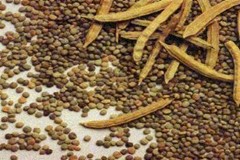Drought sees less monsoon crops but soybean hits record acreage

This year’s oilseed planting total of 14.3m hectares is 220,000 hectares down on last year, as a result of extended dry weather until the middle of July. This served to impede the timely planting of monsoon crops and discouraged farmers from expanding area in the fear that seeds would not have enough moisture to germinate.
Late rainfall has adversely affected the planted area of rice, pulses, peanuts, sunflower and coarse grains, while earlier anticipation of favourable returns encouraged farmers to expand area to soybean and sugarcane.
Bumper year for soybean acreage
Furthermore, planted soybean areas reached an all-time-high of 10.7m hectares, up 367,000 hectares over last year. The late arrival of monsoon rains across major soybean growing regions recouped much-needed soil moisture and encouraged late planting, extending this in some places until the end of July.
Strong domestic soybean prices of up to 50% above than the corresponding period last year have been an additional incentive for expanding area to soybeans. Based on preliminary field assessments, this year’s soybean production is forecast at 11.1m tonnes—marginally higher than last year, but still down 0.4m tons from estimates earlier in the year.
Lower average yield due to late planting will be partially offset by the gain in planted area. Industry observers believe that recent heavy rains in the western state of Madhya Pradesh may negatively affect plant growth if rains don’t recede very quickly.
Sunflowers and peanuts also down
Deficit monsoon rains in the major sunflower-growing regions of Karnataka and Maharashtra influenced a shift to cotton, sugarcane and soybean production, reducing the 2012 monsoon season’s planted area of sunflowers to 148,000 hectares, down 44,000 hectares from last year. Over the last five years, sunflower acreage has come down by 600,000 hectares due to recurrent production losses because of a host of biotic and abiotic factors.
Assuming normal growing conditions during the coming winter-sown season, total sunflower area and production for 2012/13 are forecast lower at 600,000 hectares and 550,000 tonnes respectively. Sunflower production was somewhat higher last year due to higher returns from other technical crops.
Compared to last year, monsoon peanut planting is also down 13% at 3.5m hectares. States reeling under acute drought moved from peanuts to other short-duration remunerative crops. Until mid-August Gujarat had received only 40% of its average rainfall, while Karnataka and Maharashtra were slightly better at 70%. With Gujarat being the worst hit among peanut-growing states, farmers there shifted to guar, vegetables, forage and coarse grains, as a result of which peanut acreage in Gujarat slipped 15% to 1.2m hectares.















